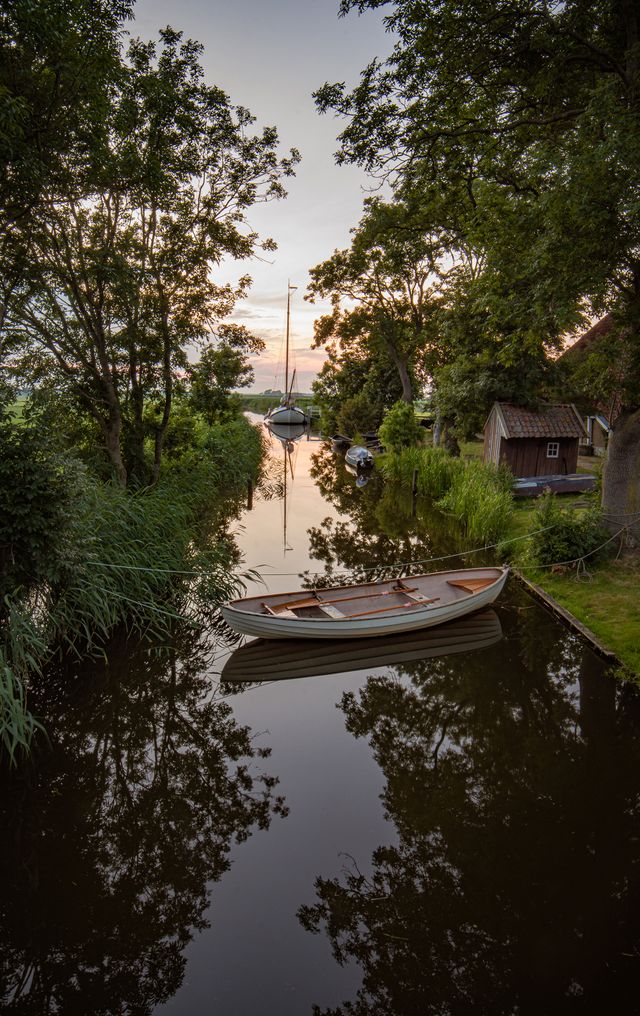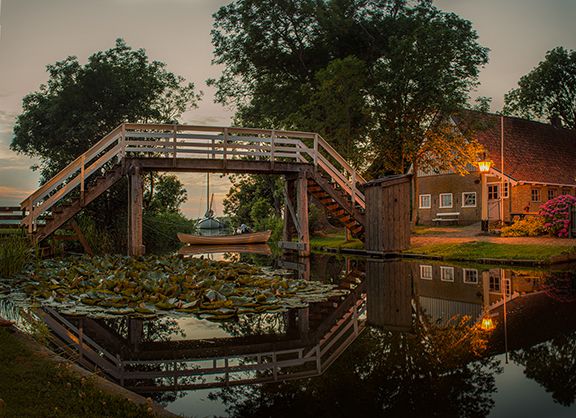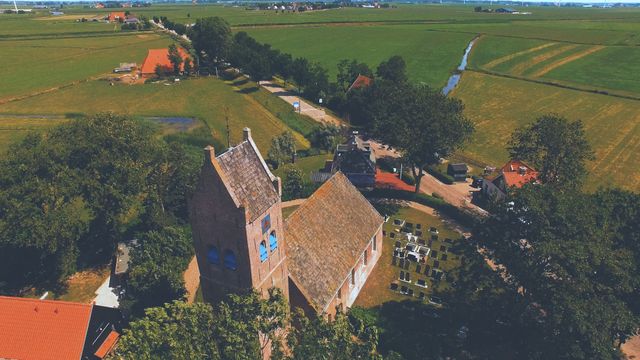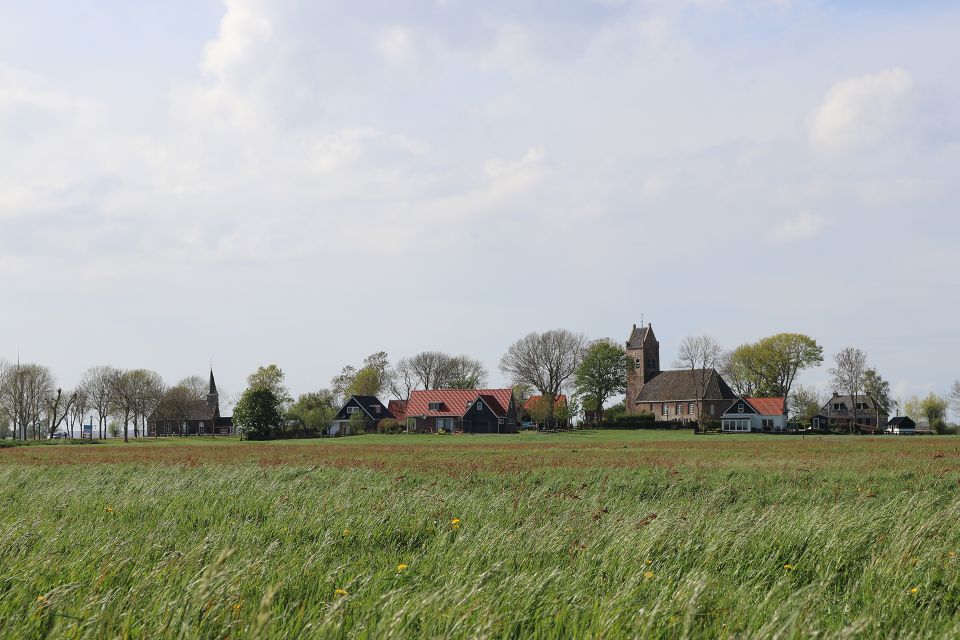Raised village of Allingawier
Before the advent of the sea dikes, the coastal areas of Friesland and Groningen were difficult to access and barely passable. And were sometimes even dangerous, because they were flooded every day. Despite these drawbacks and dangers, many people were strongly attracted to the coastal areas. Maybe because there was food in abundance: fish and other marine animals and birds. The ‘dry feet guarantee’ was created by ‘Waterlanders’ of the past by building mounds (terpen) and living on them. Raised above the flowing water they thought they were safe. The small mounded village of Allingawier is a beautiful example of such a place on the coast where people settled. The ancient village originated in the early Middle Ages.
In top ten most beautiful locations
Allingawier originated on a terp: an elevated piece of land surrounded by water. It was a real fishing village, situated on the Makkumermeer. But as a result of land reclamation, it ended up in the middle of farmland. The name of village café De Meermin (the mermaid), which used to be situated by the water, still reminds us of that time. After the reclamation, farms developed around the village, a process which expanded notably in the twentieth century. But the village centre itself remained compact. Allingawier was once nominated as one of the ten most beautiful spots in the Netherlands. The picturesque village with its church on a mound and two national monuments is beautifully situated in the peat meadows of Waterland van Friesland. This region is the cradle of pedigree Frisian livestock – famous worldwide.


Experience the atmosphere of yesteryear
There’s no better option for anyone wanting to experience the life of times gone by than in Allingawier and the Frisian museum Aldfaers Erf, which can be found here. Aldfaers Erf is Frisian for ‘the heritage/inheritance of your ancestor’. The village exudes the tranquillity and atmosphere of an age gone by, and the centre consists of small town houses, a few farms, sheds and barns. The village church dates from 1634, though there was another church here too, long ago. Its clock, dating from 1599, can still be seen in today’s church. On the southern edge of Allingawier the Dutch Reformed denomination founded its own church in 1893. The creation story is beautifully depicted in this place of worship. The building now serves as a reception centre for visitors to the museum.
Visit
Enjoying old crafts
These days we don’t do much more with our hands than press keys and let the technology do the hard stuff. This used to be different. In the past your hands would create what your mind had conceived, or what you needed on a daily basis. The museum village is home to artisans who understand their trade very well and who are happy to explain and demonstrate their old crafts, such as baker, blacksmith and painter. Taste and smell Friesland’s sweet past in grandmother’s shop or in the bakery where ‘drabbelkoeken’ are still baked according to a centuries-old secret recipe. Walk through the village to the museum farm and experience the life of a Frisian peasant family as it was in centuries past. A real eye-opener.
Visit the museum
